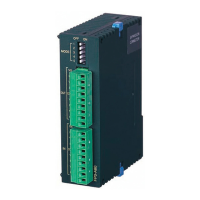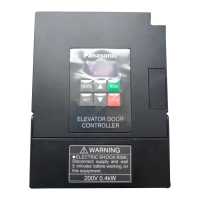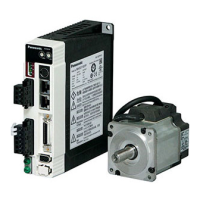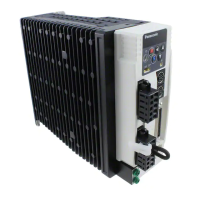Do you have a question about the Panasonic AG-A850 and is the answer not in the manual?
Diagram and explanation of a basic cut editing setup.
Diagram and explanation for A/B roll editing with multiple players.
Diagram and explanation for multi-recorder A/B roll editing.
Configuration specific to the AG-A850 unit.
Steps for editing in the limited mode.
Steps for editing in the standard mode.
Recording video takes sequentially on a new tape.
Recording new signals onto a pre-recorded tape.
Switching between two players with effects.
Recording pictures played back in slow motion.
Choosing between assemble or insert editing modes.
Choosing the VTR for operation.
Setting dissolve, wipe, and transition times.
Choosing A/B roll and insert editing modes.
Executing A/B roll editing with preview and auto editing.
Selecting VTRs for A/B roll editing.
Entering edit points for A/B roll operations.
Steps to start multi-recorder editing.
Entering and editing multiple events together.
Editing process where the OUT point is omitted.
Editing by omitting the IN point setting.
Simultaneous source start with manual switching.
Executing slow-motion editing.
Editing non-VTR sources like cameras or generators.
Executing audio split editing.
Automatic recording of the first edit segment.
Recording only time code onto tape.
Verifying set IN, OUT, and DUR points.
Navigating to specific edit points or times.
Fine-tuning edit points by 1-frame increments.
Revising IN, OUT, or DUR points with numerical input.
Erasing specific edit points.
Managing edit data within the EDL memory.
Restoring previously revised edit points.
Restoring previously previewed and edited data.
Displaying the elapsed editing time.
Setting the initial time code for TC insert editing.
Correcting already entered edit data.
Aligning player edit points with recorder IN point.
Performing system configuration settings.
Performing VTR-specific configuration settings.
Erasing all edit data from the EDL memory.
Clearing a specific range of edit data.
Resetting the entire EDL memory.
More error codes and remedial actions.
Provides solutions for additional operational issues.
Diagram and explanation of a basic cut editing setup.
Diagram and explanation for A/B roll editing with multiple players.
Diagram and explanation for multi-recorder A/B roll editing.
Configuration specific to the AG-A850 unit.
Steps for editing in the limited mode.
Steps for editing in the standard mode.
Recording video takes sequentially on a new tape.
Recording new signals onto a pre-recorded tape.
Switching between two players with effects.
Recording pictures played back in slow motion.
Choosing between assemble or insert editing modes.
Choosing the VTR for operation.
Setting dissolve, wipe, and transition times.
Choosing A/B roll and insert editing modes.
Executing A/B roll editing with preview and auto editing.
Selecting VTRs for A/B roll editing.
Entering edit points for A/B roll operations.
Steps to start multi-recorder editing.
Entering and editing multiple events together.
Editing process where the OUT point is omitted.
Editing by omitting the IN point setting.
Simultaneous source start with manual switching.
Executing slow-motion editing.
Editing non-VTR sources like cameras or generators.
Executing audio split editing.
Automatic recording of the first edit segment.
Recording only time code onto tape.
Verifying set IN, OUT, and DUR points.
Navigating to specific edit points or times.
Fine-tuning edit points by 1-frame increments.
Revising IN, OUT, or DUR points with numerical input.
Erasing specific edit points.
Managing edit data within the EDL memory.
Restoring previously revised edit points.
Restoring previously previewed and edited data.
Displaying the elapsed editing time.
Setting the initial time code for TC insert editing.
Correcting already entered edit data.
Aligning player edit points with recorder IN point.
Performing system configuration settings.
Performing VTR-specific configuration settings.
Erasing all edit data from the EDL memory.
Clearing a specific range of edit data.
Resetting the entire EDL memory.
More error codes and remedial actions.
Provides solutions for additional operational issues.
| power source | AC 120V, 50/60Hz |
|---|---|
| power consumption | 9W |
| operating temperature | 5° to 40°C (41°F to 104°F) |
|---|---|
| operating humidity | 35 to 80% |
| dimensions (W x H x D) | 424 x 107 x 279 mm (16 11/16" x 4 3/16" x 11") |
|---|---|
| weight | 3.2 kg (7.1 lbs.) |
| power source | AC 220 – 240V, 50/60Hz |
|---|---|
| power consumption | 10W |
| operating temperature | 5° to 40°C (41°F to 104°F) |
|---|---|
| operating humidity | 35 to 80% |
| dimensions (W x H x D) | 424 x 107 x 279 mm (16 11/16" x 4 3/16" x 11") |
|---|---|
| weight | 3.2 kg (7.1 lbs.) |











